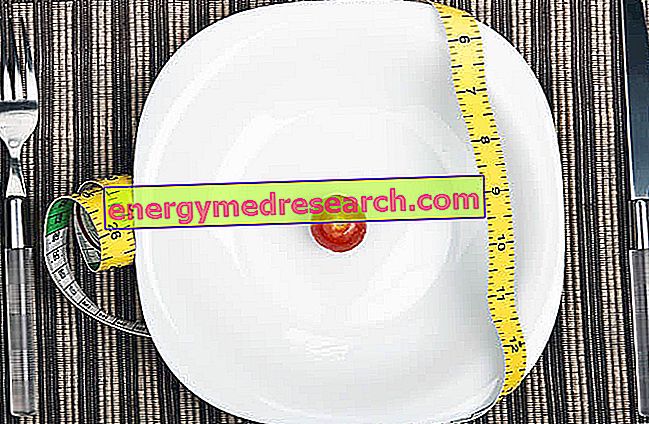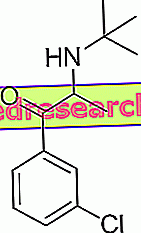Introduction
In the vast world of nutrition and clinical dietetics, the so-called VLCD, or Very Low Calories Diet (in Italian: very low calorie diets or very low calorie diets) have taken on a certain relevance in recent times.
Extrapolated from their clinical context - mostly dedicated to the control and management of morbid obesity, also in preparation for bariatric surgery - the VLCDs were particularly successful also in the control of simple overweight or non-morbid obesity.
Much used by some famous celebrities, the Very Low Calories Diet has become part of the current dietary scenario as a possible nutritional alternative in the hands of the professional.

Starting bases
VLCDs are diets with very low calorific value (classically they should not exceed 800 Kcalories per day), commonly used in the treatment of morbid obesity.
These diets are significantly below the average daily caloric needs of an adult (roughly estimated in the 2000 Kcal), therefore potentially inducing a state of malnutrition.
For this reason, in order to avoid nutritional deficiencies, especially in the sphere of micronutrients, in most cases in these diets it is necessary to replace meals with supplements able to respect the strict caloric indications, while providing all the micronutrients needed to preserve a certain state of well-being.
Also in this case the starting presupposition is represented by a strong caloric and carbohydrate limitation, which pushes the human body towards the use of lipid reserves as the main energy source.
In these circumstances, the increased oxidation of lipids to acetic acid, under overall conditions of oxalacetate deficiency, determines the formation of ketone bodies (valuable nutrient for the brain in the absence of glucose) identifying a para-physiological situation known as ketosis.
Precisely because of these accentuated metabolic implications, VLCDs should not be prolonged for over 12 weeks and should necessarily be supervised by medical personnel.
Indications
The strongly hypocaloric diets find indication:
- In the treatment of morbid obesity;
- In the preparation for particular surgical interventions in the context of obesity (eg adjustable gastric banding or intragastric balloon)
- In rapid weight loss linked to specific medical needs;
- In the treatment of obesity, even non pathological, resistant to other dietary interventions.
In the literature there is evidence that would describe the efficacy of this type of diet, always under the strict medical supervision, in the treatment of some psychiatric manifestations even in childhood.
Clearly, there are still no precise indications on the matter, given the completely experimental nature of the aforementioned studies.
Potential benefits
Several studies seem to agree on the metabolic benefits of highly hypocaloric balanced diets limited in time.
Among the improvements observed there would be:
- An improvement in the glycemic profile in diabetic and obese patients, with a reduction in insulin resistance;
- An improvement of the lipidemic profile, in particular of the blood concentrations of cholesterol and triglycerides;
- An improvement in joint mobility in the presence of obesity;
- A reduction of some inflammatory markers;
- Rapid weight loss, estimated between 1 and 2.5 kg per week.
Possible risks
The strong caloric restriction, the metabolic effects of the diet and the induction of the ketogenic process, could expose the patient to possible side effects, such as lethargy, increase of the sensation of appetite, state of confusion, nausea, constipation or diarrhea and headache.
Moreover, prolonged use could lead to an increased risk of nutritional deficiencies, especially in micronutrients, with alterations of the normal functionality of organs and systems.
Furthermore, interesting studies would show how, despite the fact that VLCDs are more effective in short-term weight loss, in the long term they would instead bring further gains compared to balanced low-calorie diets.
Contraindications and precautions
Given the nature of very low calorie diets, these diet regimes are absolutely contraindicated during pregnancy and lactation, in growing children and adolescents, in already malnourished subjects and in the presence of particular clinical conditions.
Precisely because of the invasiveness of these dietary protocols it would be advisable to require careful medical supervision during all phases of this diet.
Bibliography
Effects of preoperative weight loss (VLCD) on weight loss after biliopancreatic diversion in patients with severe obesity].
Ballesteros Pomar MD, Diez Rodríguez R, Calleja Fernández A, Vidal Casariego A, González de Francisco T, González Herráez L, Fernández VS, Calleja Antolín S, Olcoz Goñi JL, Cano Rodríguez I.
Nutr Hosp. 2013 Jan-Feb; 28 (1): 71-7
[Very low calorie diets in clinical management of morbid obesity].
Vilchez López FJ, Campos Martín C, Amaya García MJ, Sánchez Vera P, Pereira Cunill JL.
Nutr Hosp. 2013 Mar-Apr; 28 (2): 275-85
Comparison of a low-calorie-ketogenic diet with a standard-calorie diet in the treatment of obesity.
Moreno B, Bellido D, Sajoux I, Goday A, Saavedra D, Crujeiras AB, Casanueva FF.
Endocrine. 2014 Dec; 47 (3): 793-805.
Very low calorie diet without aspartame in obese subjects: improved metabolic control after 4 weeks treatment.
Norén E, Forssell H.
Nutr J. 2014 Jul 28; 13: 77
In the preoperative stage of bariatric surgery: a randomized trial.
Faria SL, Faria OP, de Almeida Cardeal M, Ito MK.
Surg Obes Relat Dis. 2015 Jan-Feb; 11 (1): 230-7
Clinical Effectiveness of Weight Loss and Weight Maintenance Interventions for Men: A Systematic Review of Men-Only Randomized Controlled Trials (The ROMEO Project).
Robertson C, Avenell A, Stewart F, Archibald D, Douglas F, Hoddinott P, van Teijlingen E, Boyers D.
Am J Mens Health. 2015 Jun 30
Inhibition of Neuroblastoma Tumor Growth by Ketogenic Diet and / or Calorie Restriction in a CD1-Nu Mouse Model.
Morscher RJ, Aminzadeh-Gohari S, Feichtinger RG, Mayr JA, Lang R, Neureiter D, Sperl W, Kofler B.
PLoS One. 2015 Jun 8; 10 (6): e0129802



